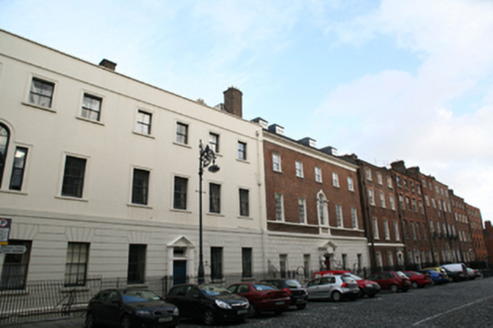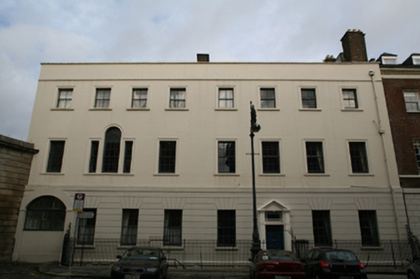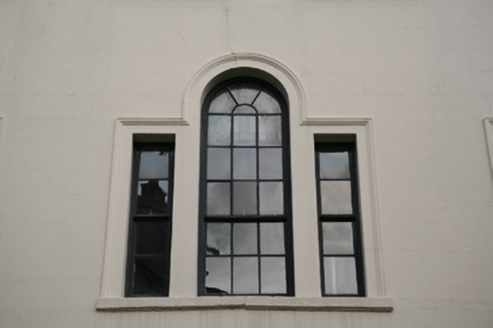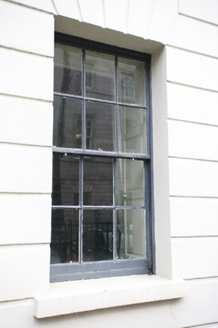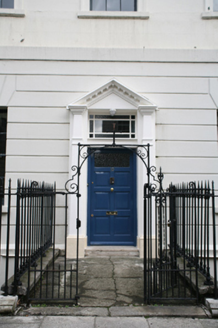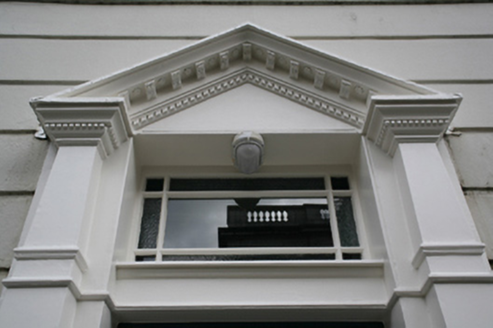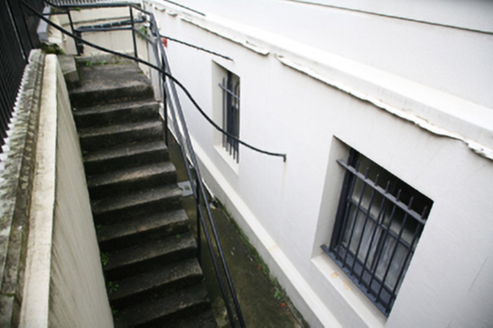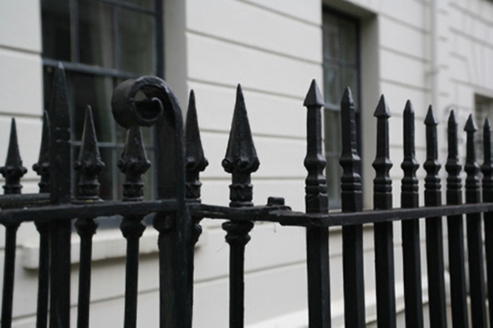Survey Data
Reg No
50010688
Rating
National
Categories of Special Interest
Architectural, Artistic, Technical
Original Use
House
In Use As
Convent/nunnery
Date
1725 - 1730
Coordinates
315177, 235007
Date Recorded
08/12/2011
Date Updated
--/--/--
Description
End-of terrace eight-bay three-storey house over raised basement, built c.1725-30, possibly to designs of Edward Lovett Pearce for Luke Gardiner, four western bays added c.1755 and having integral carriage arch to westernmost bay. Now in use as convent together with Nos. 8 & 9, abutted by large twentieth-century extensions to rear. M-profile slate roof with central valley and chimneystacks to centre and both party walls. Roof hidden behind parapet wall with moulded rendered coping and cast-iron rainwater goods breaking through to east. Painted ruled-and-lined rendered walls with string course to base of parapet and platband over channel rusticated ground floor. Chamfered render plinth course over rendered basement walls. Square-headed window openings with moulded architrave surrounds, masonry sills and replacement timber sliding sash windows, six-over-six pane to lower floors and two-over-two pane to top floor. Venetian window opening towards west end of addition at first floor level, with architrave surround and arched nine-over-six timber sliding sash window. Square-headed door opening with pedimented painted stone doorcase, replacement timber door, lintel panel and margined overlight. Door opening flanked by raised pilasters on plinth blocks supporting dentillated open-bed pediment with modillions to raking cornice. Door opens onto stone step and concrete platform, flush to street and bridging basement. Platform and basement enclosed by wrought and cast-iron railings set on moulded granite plinth wall with cast-iron bootscraper. Later iron gates and iron arch enclose platform to pavement. Round-headed former carriage arch with plain rendered surround and infilled with multiple-pane timber window and fanlight fronting onto diorite setts to street. Matching iron gate to west provides basement access via granite steps. Rear plot built over with twentieth-century rendered extension opening onto Henrietta Lane.
Appraisal
This house was built for Luke Gardiner with the involvement of Edward Lovett Pearce. The original house was extended to the west c.1755 by Charles Gardiner. The building is reputed to contain one of the street’s best eighteenth-century interiors with original joinery and plasterwork ceilings. Although the house has been heavily remodelled it forms an important part of the evolving nature of the street and contributes to the overall interest and appearance of this early Georgian streetscape. Laid out by Luke Gardiner in the 1720s, Henrietta Street is a short cul-de-sac containing the finest early Georgian houses in the city, and was named after Henrietta Crofts, third wife of Charles Paulet, 2nd Duke of Bolton and Lord Lieutenant in 1717-21. The street developed in a piecemeal fashion and set the trends of scale and design in domestic architecture.
